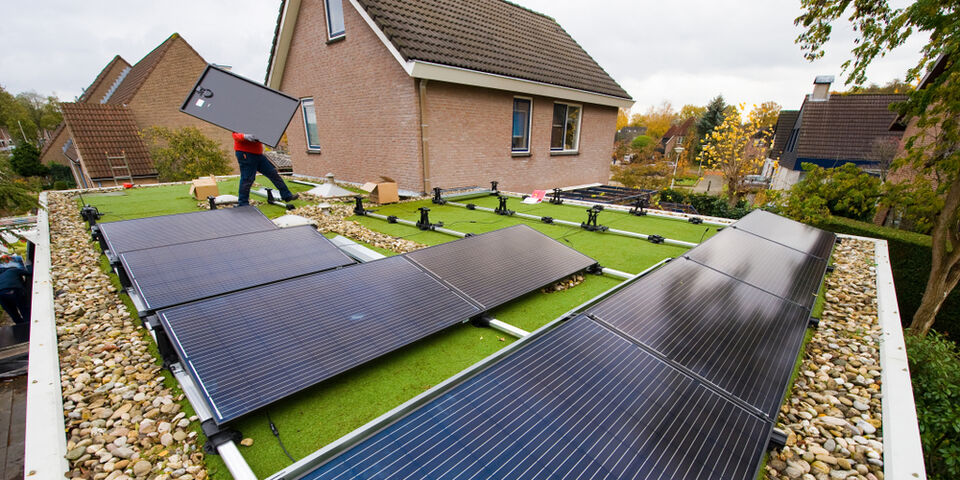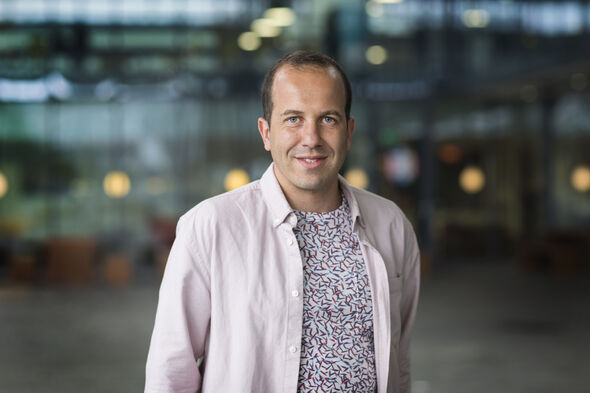Prof Talk | So no sustainable homes then?
For most home owners the cost of making their home sustainable will outweigh the resulting savings on energy. The PBL Netherlands Environmental Assessment Agency released this nugget of information in a report published in late August. Bearing in mind the climate targets, this seems not to be good news. TU/e Fellow Elke den Ouden (IE&IS) and Assistant Professor Roel Loonen (Built Environment) say that innovation and customization must provide the solution.
Financial considerations are important, but certainly not the only reason to make homes more sustainable, says Elke den Ouden of the research group Innovation Technology Entrepreneurship & Marketing, making the issue less stark. “Many people are pretty worried about the state they are leaving the planet in for their children and grandchildren. This makes the payback period less important and they even don't mind if the renovation actually costs some money. Of course, if you have to borrow thirty thousand euros for this, you are going to feel deterred, but this reluctance can be eased with a favorable finance construction.”
Similarly, the nuisance caused by renovation work is another factor currently deterring many people, says Den Ouden, whose posts at TU/e include program manager for Smart Cities. “Of course it's unpleasant to have work done on your house while you are living there, especially if it takes a long time.” Innovation is needed, therefore, with respect to both financing and construction, she believes, so that making homes sustainable becomes a more attractive proposition. “We need to think more creatively. We want to move to a situation in which entire streets are renovated in one go, with only a day needed for each home. Then a family can have a day out at Efteling, as it were, and come back to find the job done. This requires modular systems, put together in the factory. This would also be cheaper.”
Making our housing stock more sustainable and creating the energy supply that goes hand in hand with that is an extremely complex puzzle, the TU/e Fellow is keen to stress. “Various parties are involved and they must all act in concert. What's more, the situation is different for each home owner, and private individuals have a hard time weighing everything up and deciding what the sensible thing is to do. This also depends on whether, say, district heating is available or planned. A single house isn't made sustainable by a single party; this only adds to the complexity for the owner.”
She would find it a shame if the report by the PBL Netherlands Environmental
Assessment Agency were to have a demotivating effect. “We should regard a publication like this from an influential organization as a trigger for seeking ways that are indeed profitable and attractive to make the switch to sustainable housing. This is because doing nothing is not an option.”
Likewise, Assistant Professor Roel Loonen of the research group Building Performance is keen to add shades of meaning to the gloomy message of the PBL report. The idea that the move toward sustainability should be profitable per se is, he believes, mistaken. “What is the payback period for a new bathroom or kitchen? There's no such thing; it's all about the quality of the home, how comfortable the home is. Naturally, this also applies to some extent to insulation.”
Of at least equal importance, he believes, is that the report takes no account of innovation. “The calculations are based on the current state of affairs, in which the option of going fully sustainable is compared with doing nothing.” The researchers at PBL are working on the assumption that the move towards sustainability would involve creating an energy-neutral home that has an energy label B. To give you an idea: supposing you start with a house with energy label G, then the exterior walls, floor and roof would need to be insulated, double glazing installed, and an air-heat pump installed in combination with LT (low temperature) radiators. The estimated cost of this is thirty thousand euros, excluding the maximum 26 solar panels needed to supply the house with power and a new heat pump costing five thousand euros after fifteen years.
Although there are few situations in which such considerable renovation would be financially attractive, this does not mean, says Loonen, that you should instead do absolutely nothing. For most home owners, measures are available that will give them a return on their investment right away. “You can make a start by insulating your roof or floor and, say, insulating the walls or windows in five years' time. This would enable you to benefit from any innovations that come along in the meantime.”
Smart coating
These innovations also occupy Loonen, a specialist in models for calculating the energy management of homes. “At the moment we are running four projects related to this theme. With TNO and AkzoNobel, for example, we are researching coatings that reflect sunlight in hot weather and that are particularly good at absorbing that light in winter. A smart coating like this, when combined with simple cavity wall insulation, could, we believe, provide an adequate solution for a large part of the housing stock. Then there would be no need for expensive external cladding.” In addition, the coating prevents overheating in summer, a growing problem here in the Netherlands as it is elsewhere. “Obviously you don't want everyone to feel compelled to switch on the air conditioning on hot days. That wipes out a lot of your savings in one fell swoop.”
A second idea, which is being researched with the company Active Insulation, keys even more directly into the wish to switch insulation on and off at will, Loonen explains. “This can be achieved by fitting an insulation layer, made up of a network of tiny channels, with tiny fans.” When the fans are off, the layer serves to insulate. “But by generating an air flow with the fans, you create, as it were, a thermal short circuit. Thus, during a cool summer's night you can generate active cooling or, by contrast, during a sunny winter's day bring more heat into your home. At the moment we are measuring how well this works in practice in an experimental house in Hapert.”
Prefab roofs
Similarly, cooperation is also ongoing with chemical group Sabic and solar panel manufacturer Solarge. This is all about prefabricated synthetic roofs, fitted with both insulation and lightweight solar panels in which the glass surface layer is replaced with plastic. These prefab roofs are currently being tested at SolarBEAT, the test facility on the low-rise section of Vertigo. This solution would make it possible on large sustainability jobs to replace roofs in one go, says Loonen. “This is much less labor-intensive and thus cheaper. And, as the PBL report shows, this cost reduction is very necessary.”
Finally, the researcher hopes soon to secure a large assignment from the Ministry of the Interior. “We are keen to develop a calculation tool that home owners can use to see which solution makes most sense for them in terms of investment costs and savings on their energy bills. Every situation is different and so custom work is required.” The tool will become part of a larger digital system that will illuminate a number of things, including the necessary investment in the energy grid, he explains. “This is needed because the situation is much more complex than PBL has been able to show in its report.”




Discussion